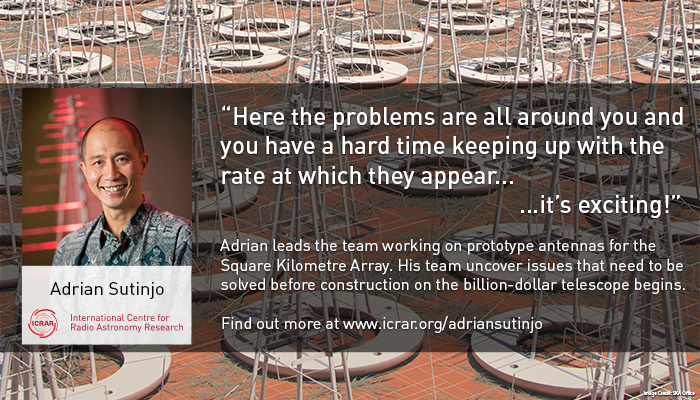But for Adrian Sutinjo, solving problems to pave the way for the Square Kilometre Array (SKA) is absolutely the best part of his job.
“I like how easy it is to find problems that have not really received attention,” he says.
“In a lot of areas of research you have to dig quite deep to find problems. Here the problems are all around you and you have a hard time keeping up with the rate at which they come up… it’s exciting.”
Adrian originally trained as a radio engineer and worked in industry for seven years before returning to university to complete a PhD in antennas and electromagnetics.
Today, the down-to-earth researcher leads the prototyping and verification task for the Aperture Array Verification System for SKA-low.
“In 2014, our team completed the characterisation of a 16-element prototype in the Murchison region, which was deployed, linked to the existing Murchison Widefield Array and the data processed by ICRAR researchers.”
The highly successful project was the first verification system on site and uncovered a number of issues to be solved in preparation for the start of construction.
The team are now working on a much larger 256-element prototype, which is expected to be the same size as a full SKA station and will represent one part in several hundred of the final SKA.
